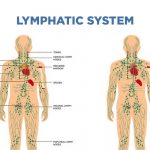Understanding the Science Behind Whole-Body Vibration Therapy
Whole-body vibration therapy is a type of physical exercise that utilizes specialized machines to produce mechanical vibrations that are transmitted throughout the entire body. These vibrations may vary in terms of frequency, amplitude, and direction, and they stimulate muscles and bones to contract and relax, eliciting a variety of physiological responses.
Understanding the science behind whole-body vibration therapy is crucial for safe and effective use. By understanding how mechanical vibrations are transmitted to the body and the physiological responses that occur, individuals can maximize the potential benefits of whole-body vibration therapy while minimizing the risk of injury or side effects.
Additionally, with a better understanding of the science behind whole-body vibration therapy, researchers and healthcare professionals can continue to explore and refine the applications of this modality for a variety of health and fitness goals.
Mechanics of Whole-body Vibration Therapy
The mechanics of whole-body vibration therapy involve the use of specialized machines to generate mechanical vibrations that are transmitted to the entire body. These vibrations stimulate the muscles and bones to contract and relax, producing a range of physiological effects. Different types of whole-body vibration machines are available, and the vibrations can be transmitted through the body in various ways depending on the machine and the posture of the individual. Understanding the mechanics of whole-body vibration therapy is important for safe and effective use.
Explanation of the basic principles of whole-body vibration
The basic principle of whole-body vibration therapy is the application of mechanical vibrations to the body, which creates an oscillatory movement that stimulates the muscles and bones. The vibrations can be produced by a vibrating platform, a vibration plate, or other types of vibration machines. The frequency, amplitude, and direction of the vibrations can be adjusted to achieve different therapeutic goals.
Frequency refers to the number of vibrations per second and is typically measured in hertz (Hz). Low-frequency vibrations (less than 20 Hz) are often used for relaxation and recovery, while higher frequencies (20-50 Hz) are commonly used for strength and power training. Some machines also offer variable frequencies to allow for customization based on individual needs.
Amplitude refers to the magnitude or intensity of the vibrations, and it is usually measured in millimeters (mm). Larger amplitudes create more intense vibrations, while smaller amplitudes produce gentler vibrations. The amplitude can also be adjusted depending on the desired therapeutic outcomes and the user’s tolerance level.
Direction refers to the orientation of the vibrations, which can be vertical, horizontal, or multi-directional. Vertical vibrations move up and down, mimicking the natural direction of gravity, while horizontal vibrations move back and forth. Multi-directional vibrations combine both vertical and horizontal movements, providing a more complex stimulus to the body.
Understanding the types of whole-body vibration machines
There are several types of whole-body vibration machines available in the market, including
- Lineal machines: These machines produce vertical vibrations that move the body up and down in a straight line. They are commonly used for fitness and strength training, as they provide a consistent and predictable stimulus to the muscles and bones.
- Pivotal machines: These machines produce horizontal vibrations that create a seesaw-like motion, with one side of the platform moving up while the other side moves down. Pivotal machines are often used for therapeutic purposes, as they offer a gentle and rhythmic stimulus that can be suitable for individuals with limited mobility or medical conditions.
- Triplanar machines: These machines produce multi-directional vibrations that combine vertical and horizontal movements, as well as rotational forces. Triplanar machines offer a more complex stimulus to the body, engaging a wider range of muscles and providing a greater challenge to balance and coordination.
How vibrations are transmitted through the body
When using a whole-body vibration machine, the vibrations generated by the machine are transmitted to the body through the feet or other contact points. These vibrations travel through the body, causing the muscles and bones to contract and relax in response to the mechanical stimulus. The muscles act as natural shock absorbers, dampening the vibrations and distributing the forces throughout the body.
Mechanical vibrations can trigger a variety of physiological responses in the body, including increased muscle activation, improved blood circulation, enhanced bone density, and changes in hormonal and metabolic responses. These responses can contribute to the potential benefits of whole-body vibration therapy, such as increased strength, flexibility, and balance, as well as improved overall health and well-being.
It’s important to note that the effectiveness of whole-body vibration therapy depends on various factors, including the frequency, amplitude, and duration of the sessions, as well as the individual’s health status, fitness level, and adherence to proper techniques and guidelines.
Understanding the mechanics of whole-body vibration therapy is crucial for the safe and effective use of these.
Effects of Whole-Body Vibration Therapy on Muscles and Bones
One of the main benefits of whole-body vibration therapy is its impact on muscle strength, flexibility, and endurance. The vibrations can stimulate muscle contractions, helping to build muscle mass and increase muscular strength. Additionally, regular use of whole-body vibration therapy can improve flexibility by increasing joint range of motion and reducing muscle tension. Studies have also shown that this therapy can improve muscular endurance, allowing individuals to perform physical activities for longer periods.
-
Physiological responses to whole-body vibration therapy
-
Impact on muscle strength, flexibility, and endurance
-
Effects on bone density and osteoporosis
Whole-body vibration therapy can trigger a variety of physiological responses in the body, including increased muscle activation, improved blood circulation, and changes in hormonal and metabolic responses. These responses can contribute to the potential benefits of whole-body vibration therapy, such as increased strength, flexibility, and balance, as well as improved overall health and well-being.
Research has shown that whole-body vibration therapy can have positive effects on muscle strength, flexibility, and endurance. By stimulating muscle contractions, this therapy can help to build muscle mass and increase muscular strength. Additionally, whole-body vibration therapy can improve flexibility by increasing the joint range of motion and reducing muscle tension. Studies have also demonstrated that regular whole-body vibration therapy sessions can improve muscular endurance, allowing individuals to perform physical activities for longer periods.
Another potential benefit of whole-body vibration therapy is its impact on bone density. By subjecting the bones to mechanical stress, this therapy can stimulate the growth and development of bone tissue, which can help to increase bone density and reduce the risk of fractures. This is particularly relevant for individuals with osteoporosis, a condition characterized by low bone density and an increased risk of fractures. Studies have shown that regular whole-body vibration therapy sessions can improve bone density in individuals with osteoporosis, potentially reducing the risk of fractures and improving overall bone health.
It’s important to note that the effectiveness of whole-body vibration therapy on muscles and bones depends on various factors, including the frequency, amplitude, and duration of the sessions, as well as the individual’s health status, fitness level, and adherence to proper techniques and guidelines.
Whole-body vibration therapy has the potential to improve muscle strength, flexibility, and endurance, as well as increase bone density and reduce the risk of fractures in individuals with osteoporosis. By understanding the effects of this therapy on the body, individuals can make informed decisions about incorporating whole-body vibration into their exercise routine.
Benefits of Whole-Body Vibration Therapy
Whole-body vibration therapy is an innovative form of exercise that offers a range of potential benefits for individuals of all ages and fitness levels. The mechanical vibrations produced by specialized machines stimulate muscle and bone tissue, resulting in a range of physiological responses that can positively impact overall health and well-being.
-
Rehabilitation and injury prevention
-
Fitness and performance enhancement
-
Weight loss and body composition
-
Aging and chronic disease management
One of the most significant benefits of whole-body vibration therapy is its potential for use in rehabilitation and injury prevention. The therapy can help to stimulate muscle and bone tissue growth, which can aid in the recovery process for injuries and reduce the risk of future injuries. For example, whole-body vibration therapy has been shown to improve balance and stability in elderly individuals, reducing the risk of falls and associated injuries.
Whole-body vibration therapy can also be effective for fitness and performance enhancement. The vibrations stimulate muscle contractions, which can lead to increased muscle mass, strength, and endurance. This can help individuals improve their athletic performance and achieve their fitness goals more quickly and effectively.
Another potential benefit of whole-body vibration therapy is its impact on weight loss and body composition. The therapy has been shown to increase metabolism, leading to a reduction in body fat and an improvement in body composition. This can help individuals achieve their weight loss goals and improve their overall health and well-being.
Finally, whole-body vibration therapy has potential applications for aging and chronic disease management. The therapy has been shown to improve bone density and reduce the risk of fractures in individuals with osteoporosis. It has also been shown to improve balance and mobility in elderly individuals, reducing the risk of falls and associated injuries. Additionally, the therapy has been studied for its potential benefits in managing chronic conditions such as multiple sclerosis, Parkinson’s disease, and fibromyalgia.
Whole-body vibration therapy has a wide range of potential benefits for individuals of all ages and fitness levels. From rehabilitation and injury prevention to weight loss and chronic disease management, the therapy has been shown to positively impact overall health and well-being. By incorporating this innovative form of exercise into their routine, individuals can potentially improve their quality of life and achieve their health and fitness goals.
Safety and Considerations for Whole-body Vibration Therapy
Whole-body vibration therapy is generally considered safe and well-tolerated by most individuals. However, as with any form of exercise or therapy, there are certain precautions and considerations that individuals should be aware of before beginning whole-body vibration therapy.
Precautions and contraindications for using whole-body vibration therapy
Firstly, individuals with certain health conditions or medical concerns should consult with a healthcare professional before beginning whole-body vibration therapy. These conditions may include pregnancy, recent surgeries or injuries, cardiovascular disease, a pacemaker or other implanted medical devices, and neurological conditions such as epilepsy. Additionally, individuals with a history of retinal detachment, severe migraines, or joint or bone disorders should also consult with a healthcare professional before beginning the therapy.
Guidelines for safe and effective use
It’s important to follow proper guidelines for the safe and effective use of whole-body vibration therapy. This includes selecting an appropriate machine with appropriate frequency and amplitude settings, wearing appropriate clothing and footwear, and following proper posture and positioning during use. It’s also recommended to start with shorter sessions and gradually increase the duration and intensity of the therapy as tolerated.
Potential risks and side effect
Potential risks and side effects of whole-body vibration therapy may include muscle soreness, joint pain, and dizziness. These side effects are generally mild and short-lived, but individuals who experience persistent or severe symptoms should discontinue the use of the therapy and consult with a healthcare professional.
Whole-body vibration therapy is generally safe and well-tolerated by most individuals when used appropriately. However, it’s important to consider any medical concerns or contraindications before beginning the therapy and to follow proper guidelines for safe and effective use. By doing so, individuals can potentially reap the benefits of this innovative form of exercise while minimizing the risk of adverse effects.
In Conclusion
In conclusion, whole-body vibration therapy is an innovative form of exercise that has potential benefits for individuals of all ages and fitness levels. By generating mechanical vibrations that are transmitted throughout the body, the therapy can stimulate muscle and bone tissue, leading to a range of physiological responses.
Throughout this article, we’ve discussed the mechanics of whole-body vibration therapy, its effects on muscles and bones, and its potential benefits for rehabilitation, fitness, weight loss, and chronic disease management. We’ve also highlighted the importance of understanding the safety considerations and guidelines for effective use.
It’s essential to recognize that while whole-body vibration therapy offers potential benefits, it’s important to use it safely and appropriately. Individuals should consult with a healthcare professional before beginning the therapy, and follow proper guidelines for safe and effective use.
Sources and scientific studies on whole-body vibration therapy:
- Roelants M, Delecluse C, Goris M, et al. Effects of 24 weeks of whole body vibration training on body composition and muscle strength in untrained females. Int J Sports Med. 2004;25(1):1-5.
- Cardinale M, Bosco C. The use of vibration as an exercise intervention. Exerc Sport Sci Rev. 2003;31(1):3-7.
- Rittweger J, Ehrig J, Just K, et al. Oxygen uptake in whole-body vibration exercise: influence of vibration frequency, amplitude, and external load. Int J Sports Med. 2002;23(6):428-432.
- Verschueren SM, Roelants M, Delecluse C, Swinnen S, Vanderschueren D, Boonen S. Effect of 6-month whole body vibration training on hip density, muscle strength, and postural control in postmenopausal women: a randomized controlled pilot study. J Bone Miner Res. 2004;19(3):352-359.
- Marin PJ, Rhea MR. Effects of vibration training on muscle strength: a meta-analysis. J Strength Cond Res. 2010;24(2):548-556.







